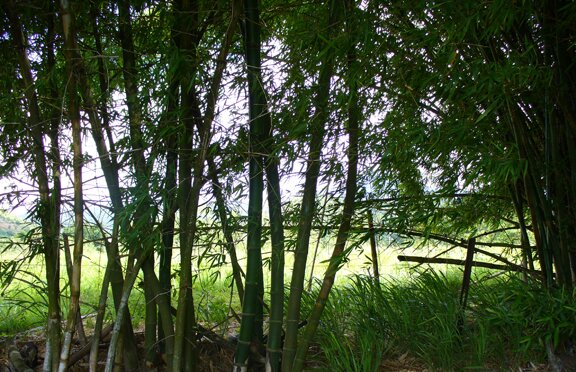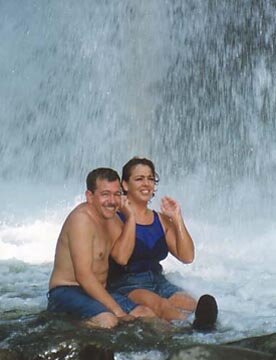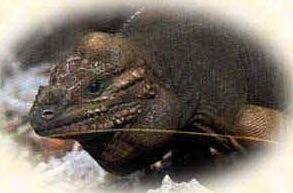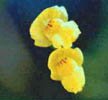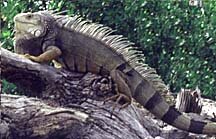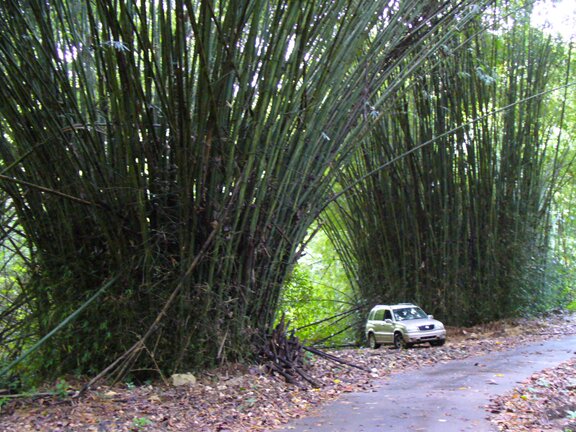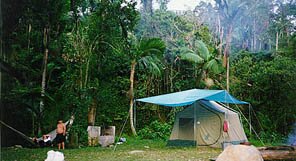|
Forest Reserves:
Islands/ Cayos/ Keys :
Reserva Natural La Cordillera. DRNA. A string of about 10 sandy islands/keys off the northeast tip of Puerto Rico. Easy to reach by local fishermans sailboat or motorboat. Sandy beaches, snorkeling. Turtle nesting areas.
Reserva Natural Caja de Muertos Island DRNA ( off Ponce) No public tranportation to the island. 8.5 nautical miles out to sea. Mangroves, coral reefs, beaches, cliffs and caves.
Desecheo Island. US Fish and Wildlife. 12 miles out to sea, west of Rincon. You can take a scuba trip here, by boat, from Rincon.
Culebra Island. Flamenco Beach has the nicest campground in all of Puerto Rico on the most beautiful beach! and it is well maintained and supervised. Lots of North Americans come here in the winter and lots of locals in the summer. Summers are overwhelmingly crowded. Culebra has many Wildlife Sanctuaries that are administered by the US Dept. of Fish and Wildlife.
'Reserva Natural Bahia Puerto Mosquito, Vieques Island' or, locally called, 'Caño Hondo'. Camping is allowed here.( There is alot of petty theft in this area) This reserve includes the western worlds most brilliant Biobay. It includes three world class beaches and several lagoons and mangrove canals. This is a turtle nesting site for 3 species of turtles, including the endangered Leatherback Turtle. Kayaking is a popular way to see this reserve. The beaches are accesible by jeep.
Gilligans Island is part of the Guanica Dry Forest Reserve. You can get there by private boat from the end of the road to the right just after the entrance to the Copamarina Resort. Great swimming and snorkeling in very clear waters, white sand.
Isla de Mona. DRNA. Island 50 miles offshore between Puerto Rico and the Dominican Republic. Mona is surrounded by cliffs and riddled by limestone caves. Photo above of cave drawing. Cliff climbing and rapelling is now prohibited. A small percent of the shoreline is pristine white sand beaches with turquoise water and excellent snorkeling. Camping permitted with permit. Mona has an endemic Iguana (Cyclura stejnegeri). Photo below.
Mona Island Iguana photo Tom Weiwandt
Coastal Forests:
Guanica Dry Forest. DRNA. No camping allowed. Office at end of road # 334 ( not marked) Miles of varied trails but very hot hiking. Not for the casual visitor. Nearly 50 endangered plant species, of which 16 are endemic, UNESCO Biosphere Reserve because of its biological diversity. 100 species of birds (endangered Whippoorwill, PR nightjar and Yellow shouldered blackbird). 1,000 year old lignum vitae tree. Ruins. Easier to see by hiking in from the beach from the end of road # 333. The time to hike in this forest is early morning. Afternoons would be nice too but it closes at 4 PM ( the supervisor does stay late often when hikers have not returned to their cars by closing time). This forest Reserve includes Gilligans Island.
Punta Ballena Reserve. CT. No camping allowed. Contiguous with the Guanica Dry Forest Reserve. A UNESCO Biosphere Reserve because of its' coastal ecosystem. Site of Hawks bill turtle nesting, crested toad, Manatees. Mangrove forest. Beach access off end of road # 333.
Bahia de Jobos. DRNA. No camping allowed. Hiking, kayaking, birding.
Aguirre Forest Reserve. DRNA. No camping yet. Boardwalk through mangroves. Kayaking on canal.
Piñones Reserve. DRNA. No camping allowed. Subtropical moist forest. Mangroves. Just East of Isla Verde, San Juan. Very beautiful beaches. (Lots of theft in area). Scenic drive through Piñones, Aviones (surfers) and calm Vacia Telega beaches on rd # 187. Sea Turtle nesting sites.
'Refugio de Vida Silvestre de Boqueron' Boqueron Bird Sanctuary. DRNA. No camping allowed. Subtropical dry forest, estuary and mangroves. 50 bird species, several endangered. Consists of three pieces of land. Includes Faro (lighthouse) Cabo Rojo area. Tel.851-41951 7:30 Am to 4 PM). There have been reported 135 species of endemic and migratory birds. Birds can be hunted during the season. Cabo Rojo Lighthouse area is a part of this reserve. No camping allowed. A spectacular place due to the cliffs below the lighthouse, the white sands beaches and salt flats. Sun sets out to sea, as this is the southwest tip of PR. Several good places to stay nearby. Nearest camping would be in the Susua Forest Reserve.
'Reserva Natural La Parguera' La Parguera Nature Reserve. DRNA. No camping allowed. Mangroves, many mangrove keys, estuaries, coral formations and good water clarity. (giant iguanas on UPR Cay) Exceptional wind surfing area. Bioluminescent bay. Great ride by small boat through mangrove canals, monkeys overhead (introduced). Good snorkeling around small mangrove cays. Town offers zoo-like atmosphere on weekends, many fish restaurants. Tel. 899-3295 (8:30-12 & 1-5 PM) This includes the bioluminescent bays. The biobay here has lost its potency. Due to nutritive content change and nearby pollution this biobay has had a change of inhabitants and the prevalent plankton here is not bioblumenescent. There are enough left, however, to give some effect on a moonless night.
Las Cabezas de San Juan Nature Reserve. CT. No camping allowed. Northeast tip of PR. With prior reservation and fee they trolley you through to the lighthouse, rocky beach and mangrove boardwalk, knowledgeable guides. Call ahead for reservations, hard to get. The bioluminescent lagoon can be accessed by boat from Las Croabas dock or rent a kayak.
Punta Guaniquilla Reserve and Bird Sanctuary. CT. No camping allowed. Very diverse. Arid w/palm and mangrove forests. Unusual limestone formations in 2 lagoons, caves, cactus, swamp, varied flora. Dramatic rock formations. Migrating bird haven. West Indian whistling duck, Ruddy duck and Caribbean coot. 30 minute hike from Buye Beach. Not really attended nor open to the public.
Humacao Natural Reserve. DRNA. No camping allowed. Limited facilities, water sports , 30 bird species. Southeast coast of Puerto Rico on the beach.Includes a Pterocarpus Forest, lagoon system. Bird Sanctuary with over 90 species observable. Great kayaking here, you can paddle out to the little island populated by monkeys ( Do not go ashore, the monkeys are not friendly). Especially good birding here. Some of the time there is a boat from Naguabo Playa that makes excursions to monkey island.
Pterocarpus Forest, CT. No access. Largest pterocarpus trees in Puerto Rico. On the East coast near Humacao.
Punta Tuna Lighthouse (U.S. Coast Guard) and DRNA. Limited access allowed. Pretty beach just east of lighthouse, can be rough. Surfers come here.
Ines Maria Mendoza Nature Reserve (Punta Yegua). CT. No access allowed. Peninsula by the sea, South east tip of PR. Drive by on #901, great views. Habitat of the endangered: PR bull finch, Black whiskered vireo & the Grasshopper sparrow. Very rare evergreen trees (Ortegon).
Tortuguero Lagoon Nature Reserve DRNA. No camping allowed. Fishing for chopas in this fresh water lagoon. Kayaking. Introduced, fresh water crocodiles, lots of birds. Unique in that it's fed by fresh water springs and flows into the sea. It is hard to see very much here without a boat. It has a boat ramp.
One of several carniverous plants surrounding Tortuguero Lagoon
'Laguna Tortuguero, in Vega Baja, is the largest natural body of fresh water in Puerto Rico. Its surroundings are characterized by its great scenic beauty and by its ecological importance. The flora of the Natural Reserve has been identified as the fourth of major importance on the island. Around 717 known species exist belonging to 119 families. Of these, 132 species are "juncos," 78 grasses, 38 species are ferns, and 20 species are orchids. There are 144 rare species and/or species in danger of extinction.'
Cambalache Forest Reserve, Arecibo DRNA. Camping allowed in two areas. Rd # 682 km 6.6. Water and showers, 8 trails and nearby beach. Good mountain biking here.
|
